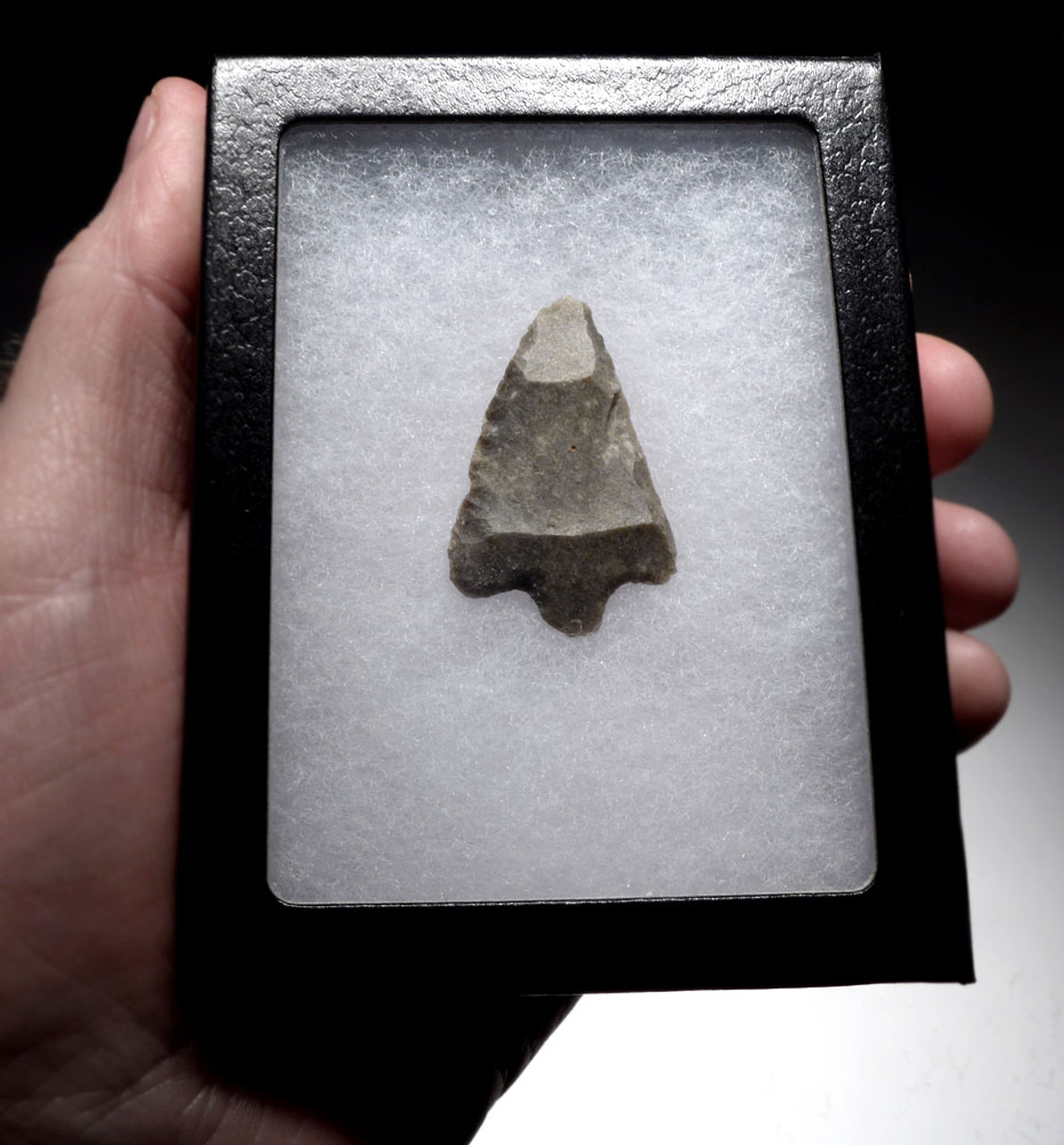Product Description
SEE MORE EUROPEAN NEOLITHIC TOOLS
For a similar specimen, please see the "Old World Typology and Price Guide" section of the "9th Edition OVERSTREET IDENTIFICATION AND PRICE GUIDE TO INDIAN ARROWHEADS" figure 82B, page 1089.
Superbly flaked during southern France's Middle Neolithic between 4500 and 3500 BC, this incredibly rare gray flint tanged projectile point arrowhead is the only example we have handled in over two decades! Stone arrowheads from Prehistoric and Neolithic Europe are some of the rarest arrowheads one could ever have in their collection. This is the only example we will ever offer. A variety of different typologies make up projectile points of the European Neolithic with tanged points offering irrefutable proof of being affixed to arrow shafts. At this time, both the stringed bow and atlatl were used to launch arrows for hunting and warfare.
The tip on this specimen shows actual use wear. The triangular symmetry is excellent with evidence of ancient re-sharpening and a well-centered tang made on its triangular form. For an advanced arrowhead collector, this would most definitely be one of the crown jewels of the collection. Original mineral deposits are still intact in hinge fractures - irrefutable evidence of authenticity and lack of any modern alterations.
HISTORY
Prehistoric France is the period in the human occupation (including early hominins) of the geographical area covered by present-day France which extended through prehistory and ended in the Iron Age with the Celtic "La Tène culture". Stone tools indicate that early humans were present in France at least 1.57 million years ago.
The Neolithic period lasted in northern Europe for approximately 3,000 years (c. 4500 BC–1700 BC). It is characterised by the so-called Neolithic Revolution, a transitional period that included the adoption of agriculture, the development of tools and pottery (Cardium pottery, LBK), and the growth of larger, more complex settlements.
Many European Neolithic groups share basic characteristics, such as living in small-scale family-based communities, subsisting on domestic plants and animals supplemented with the collection of wild plant foods, and with hunting, and producing hand-made pottery (that is made without the potter's wheel). Archeological sites from the Neolithic in France include artifacts from the Linear Pottery culture (c. 5500-4500 BC), the Rössen culture (c. 4500—4000 BC), and the Chasséen culture (4,500 - 3,500 BC; named after Chassey-le-Camp in Saône-et-Loire), the name given to the late Neolithic pre-Beaker culture that spread throughout the plains and plateaux of France, including the Seine basin and the upper Loire valleys.
It is most likely from the Neolithic that date the megalithic (large stone) monuments, such as the dolmens, menhirs, stone circles and chamber tombs, found throughout France, the largest selection of which are in the Brittany and Auvergne regions.
 US DOLLAR
US DOLLAR
 EURO
EURO
 AUSTRALIAN DOLLAR
AUSTRALIAN DOLLAR
 CANADIAN DOLLAR
CANADIAN DOLLAR
 POUND STERLING
POUND STERLING














